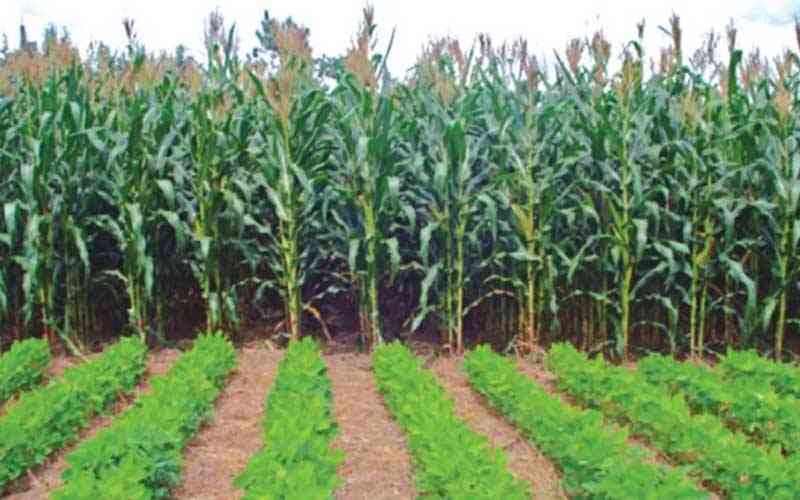
Climate change and degraded soils have significantly negatively impacted rural communities in Africa. Climate change has caused unpredictable weather patterns, such as droughts and floods, making it difficult for rural farmers to rely on traditional farming practices. Degraded soils have also made it difficult to grow crops, leading to food insecurity and poverty.
Farming is a significant economic activity in Africa, employing over 60% of the population and contributing about 15% of the continent's gross domestic products. Agriculture is particularly important in rural areas, where it is the primary source of income and livelihoods.
Climate change is causing unpredictable weather patterns, extreme weather events, and increasing temperatures, affecting the quality and quantity of crops harvested in many parts of the continent. According to the World Bank, climate change could reduce sub-Saharan Africa’s harvest by up to 10%.
These changes in agricultural productivity significantly affect farmers’ livelihoods, making it difficult for them to earn sufficient income to support their families. Many farmers are, therefore, forced to migrate to urban areas for better job opportunities and a higher standard of living. This phenomenon, known as rural-urban migration, is particularly evident in Africa, where the population is growing rapidly, and the demand for land and resources is high.
People can access better healthcare, education, and job opportunities in urban areas. However, the influx of migrants has put pressure on strained resources in urban centres, leading to overcrowding, inadequate housing, and limited access to basic services and necessities.
The combined effects of climate change and degraded soils have pushed many individuals to abandon their rural homes and seek refuge in cities. While this migration provides opportunities for a better life, it also creates challenges for both urban and rural areas. The impact of these factors on migration trends varies depending on the context of each country and region.
According to the United Nations High Commissioner for Refugees, the number of refugees and internally displaced persons in Africa was 31,4 million as of 2020, with many of these individuals being forced to leave their homes due to climate change-related events such as floods, droughts and desertification.
A World Bank report published in 2018 revealed that rural-urban migration in Africa was on the rise, with populations in urban areas projected to double by 2050. This trend has been aided by economic growth in urban areas and increased opportunities for education and employment. However, the report also highlights the challenges posed by urbanisation, including inadequate infrastructure, high levels of poverty, and limited access to basic services such as water and sanitation.
- Open letter to President Mnangagwa
- Feature: ‘It’s worse right now than under Mugabe’: Sikhala pays the price of opposition in solitary cell
- Masvingo turns down fire tender deal
- Human-wildlife conflict drive African wild dogs to extinction
Keep Reading
Furthermore, a study by the International Organisation for Migration notes that climate change and environmental factors contribute to increased migration from many African countries. For example, in Ethiopia and Somalia, drought is a significant driver of migration, with affected individuals migrating in search of water and pasture for their livestock.
The effects of climate change and degraded soils are devastatingly impacting agriculture in Africa, significantly reducing crop yields and affecting the ability of farmers to generate income. The Food and Agriculture Organisation estimates that the continent loses 8,8 million hectares of cropland annually due to soil degradation, erosion, and deforestation, equivalent to about $68 billion annually in potential food production.
Rural-urban migration in southern Africa due to climate change is a growing phenomenon affecting many countries in the region. In recent years, Zambia has been experiencing severe droughts and floods due to climate change, which have devastated the country's agriculture. Many farmers have been forced to abandon their crops and migrate to urban areas, particularly Lusaka, to find work and support themselves.
Climate change is causing increased pressure on Mozambique's agriculture, particularly in the north, which is experiencing more frequent and severe cyclones and flooding. The resulting damage to crops and infrastructure is causing rural populations to migrate to urban areas, such as Beira or Maputo.
Zimbabwe was once known as the breadbasket of southern Africa, but its agricultural output has declined significantly due to political instability and poor land reform policies. On top of that, climate change has severely affected it, with prolonged droughts and erratic rainfall patterns contributing to crop failures. These changes have caused many rural farming communities to migrate to urban centres like Harare.
Namibia is a country that is particularly vulnerable to climate change, with frequent droughts and desertification affecting its agriculture. Many rural communities have abandoned farming and migrated to urban areas, such as Windhoek and Swakopmund, to seek alternative livelihoods.
Despite being one of the most developed countries in Africa, South Africa still faces significant challenges in its agricultural sector. Poor management practices, climate change and the legacy of apartheid have contributed to the decline in rural communities and the corresponding surge in migration to urban centres.
Young people are more likely to migrate to urban areas because of the climate-induced collapse of agriculture in rural Africa. As young people leave rural areas for urban areas, it can significantly impact agriculture in the sending areas. Agricultural productivity declines as the labour force decreases, leading to further economic challenges for rural communities. Moreover, young people may take their knowledge and skills with them, leaving few opportunities for agricultural innovation and technological advancement in rural areas.
To address this challenge, rural development stakeholders must invest in programmes that promote sustainable agricultural practices and support the economic viability of rural communities. This can include initiatives to improve access to training, technology, and markets. Stakeholders should invest in agriculture through irrigation schemes, and providing farmers with access to credit and agricultural inputs can boost agricultural productivity and income, making farming more attractive and profitable.
Agroforestry practices such as tree planting, soil conservation measures, and promoting renewable energy in rural areas can improve the environment, create jobs, and improve living conditions. Providing education and training to rural people on alternative livelihoods such as micro-enterprises, beekeeping, or ecotourism can create additional opportunities for people to make a living in rural areas. Policymakers and development partners should design innovative policies and programmes to build the resilience of rural communities to adapt to the changing climate while maintaining their livelihoods.
Takudzwanashe Mundenga is a Zimbabwean journalist based in Canada. He is an NSERC-CREATE Climate Smart Soils Fellow at the University of Guelph. He writes in his personal capacity.










